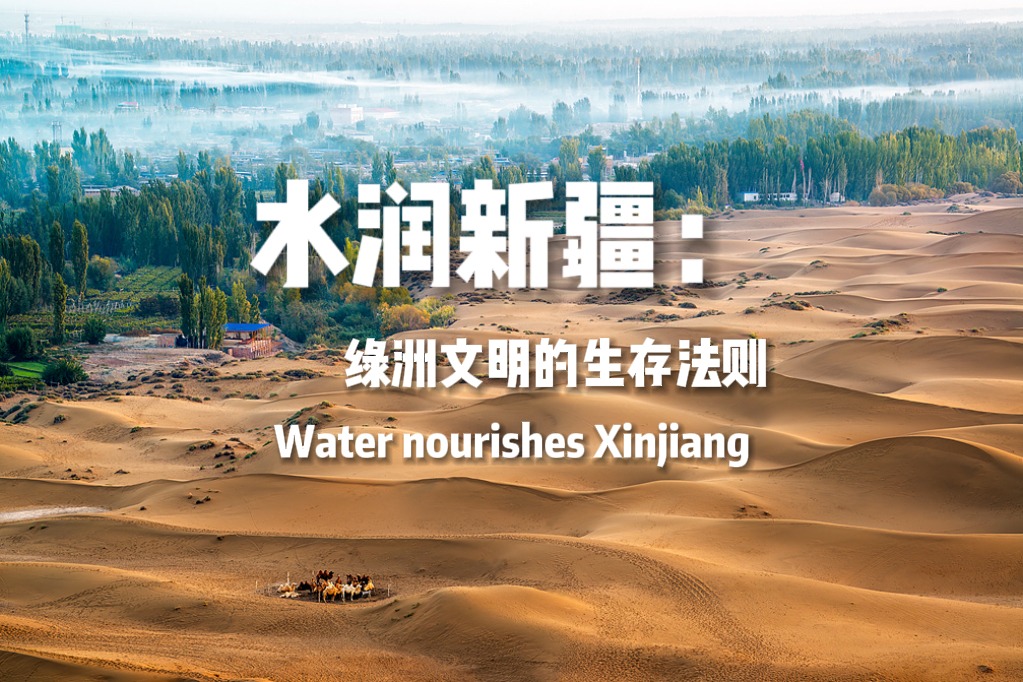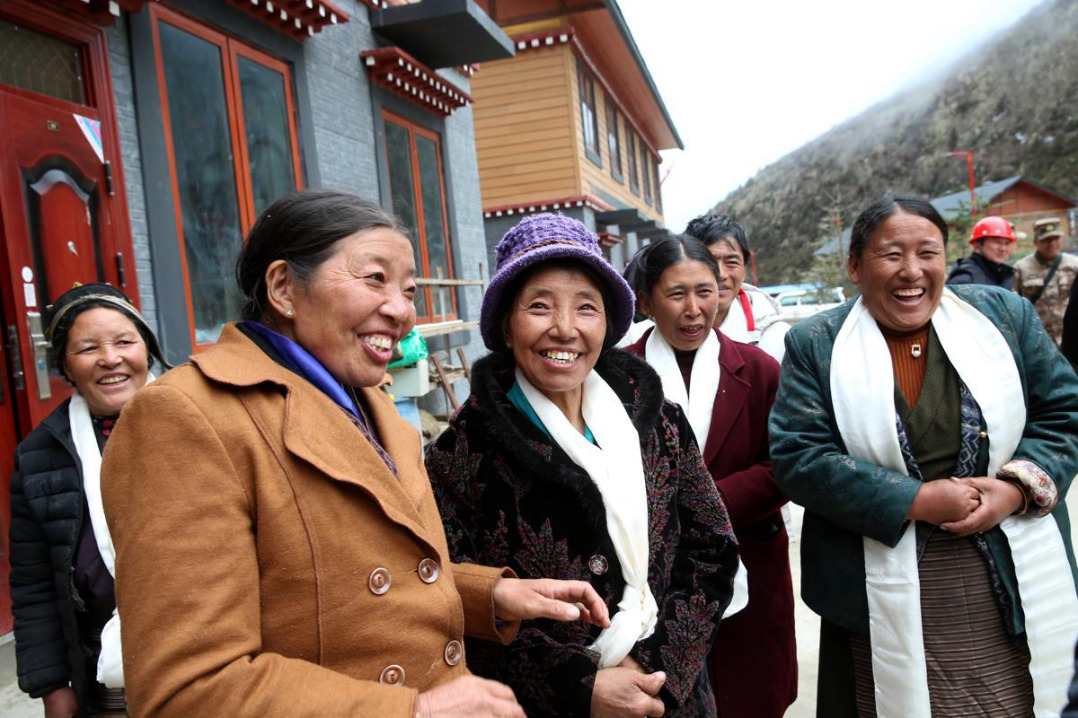Xinjiang Story: 'Sea of Death' becomes land of wonder

URUMQI -- Hop aboard, grip the handrail, press the gas, and it's time for an exhilarating adventure across the vast, rolling sand dunes on a four-wheeled quad bike.
This thrilling experience is just one of many adventures visitors can enjoy at the N39 scenic area in Makit county of Xinjiang's Kashgar prefecture. Located on the southwestern edge of the Taklimakan, China's largest and the world's second-largest drifting desert -- often referred to as the "Sea of Death" -- this once-remote and seldom-visited wilderness has become a captivating destination.
"The ride was so much fun and so intense, we enjoyed it a lot," said Li Wei, who brought her 18-year-old son for a post-graduation trip from Wuhu in East China's Anhui province, a city some 4,000 km from Kashgar. "Playing in the desert should be a great way for the kid to relax after the college entrance exam," she added.
Launched in 2016, the tourist site is attracting a growing number of visitors. The annual tourist visits have reached 500,000, with a consistent year-on-year growth rate of 7 to 15 percent, according to Dong Mingjiang, general manager of the tourism development company of the scenic area.
"Many of our visitors come from afar, such as Beijing, Shanghai and Guangdong, and we have also received many foreign visitors from countries such as the United States, Britain, Singapore and Thailand," he said.
Besides the four-wheelers, the site offers a wide choice of desert-based activities such as off-roaders, sand surfing, camel riding and desert camping.
At the camel trekking area, Chen Wenbai mounted a camel and, under the guidance of staff, set off to explore the rolling sand dunes. The rhythmic chime of camel bells and the ethereal whistling of the camel herders echoed across the wilderness, creating a scene reminiscent of the ancient Silk Road.
"It is my first time to see the big desert, it's a once-in-a-lifetime experience," said Chen, who traveled all the way from Zhuhai in South China's Guangdong province to Xinjiang. Accompanying him were a dozen "travel buddies" he met online, who had discovered this scenic spot through Xiaohongshu, the Chinese lifestyle online platform known overseas as "rednote."
The name of the tourist site N39 means the 39 degrees north latitude, a line popular with adventurers and off-road enthusiasts to cross the Taklimakan Desert. The history of the N39 dates back to 1895 when Swedish explorer Sven Anders Hedin led his team along this line to cross the Taklimakan in vain.
Today, witnessing an evolving landscape, the once-feared "Sea of Death" is transforming into a sea of life and hope.
Over the years, against the background of China's fight against desertification, people in Xinjiang have been cultivating drought-resistant plants such as populus euphratica, saxaul and red willow at the edge of the Taklimakan to fix the sand and improve the environment. In November 2024, a sand-blocking green belt stretching 3,046 km was completed to encircle the Taklimakan.
In Makit, a total of 78,400 hectares of sand prevention and control projects, including 30,666 hectares of protective forests, have been completed. At the same time, the county has been tapping into the economic potential of the desert. Besides the N39 scenic area, it also established a tourist site featuring the Daolang (swordsman) culture and paintings created by local farmers.
According to Pan Guoping, deputy director of the local culture, broadcasting and tourism bureau, in the first five months of 2025, the county received over 1.78 million tourist visits, a growth of 55.05 percent year-on-year. Tourism revenue during the period reached 732 million yuan ($102 million), up 61.58 percent.
The tourist boom is evident around the Taklimakan.
At the northern edge of the desert, Xayar county, Aksu prefecture, boasts the world's largest and best-preserved pristine populus euphratica forest stretching along the Tarim River.
Thanks to the ecological restoration efforts such as ecological water conveyance and replanting, the county has created a wetland scenic area in the desert, integrating populus euphratica forests, lakes, wetlands and waterfowl habitats. In autumn, when the forests turn into a sea of golden yellow, this once-isolated area emerges as a popular destination, drawing visitors and photographers from near and far.
At the southern margin of the desert, Yutian county in Hotan prefecture has a long history of rose cultivation. As part of the sand control efforts, local communities have successfully cultivated drought-resistant and highly adaptable rose varieties suitable to their local desert conditions.
The region now hosts a rose culture tourism festival annually, featuring an array of activities including song and dance performances, cultural exhibitions, rose-themed experiences, gourmet food tasting, agricultural product fairs, and sports events.
The booming tourism industry is offering immense opportunities for locals.
Four years ago, after graduating from Shanghai Normal University, Aynur Emer returned to her hometown of Makit and became a tour guide at the N39 scenic area. Now, at just 25 years old, she is the scenic spot's deputy general manager.
Growing up in a farming family, Aynur Emer often found herself reflecting on the desert that dominated her childhood memories -- a place of hardship she hoped to leave.
"The back door of our house opened directly onto the desert," she recalled. "During sandstorms, the roads would disappear entirely. Coming back from the market, I frequently struggled to find my way home."
As a little girl, she never imagined that the desert could become a tourist destination. Yet today, thanks to environmental improvements and a burgeoning tourism industry, the desert has transformed in her eyes from a source of struggle to one of beauty and prosperity.
"When I was young, I dreamed of traveling to see stunning landscapes far from home," Aynur Emer said. "But now, the best view is right at my doorstep."
- Ferris wheel feted by fog
- China to issue commemorative coins for 80th anniversary of victory in war against Japanese aggression and world anti-fascist war
- China to issue commemorative stamps for 80th anniversary of victory in war against Japanese aggression and world anti-fascist war
- PLA guard of honor to participate in Vietnam's National Day celebration
- Philippines a 'troublemaker' in the South China Sea
- 26 foreign leaders to attend China's V-Day commemorations on Sept 3





































